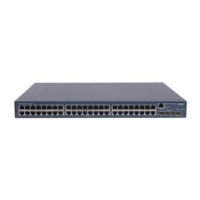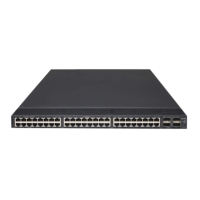1-6
Introduction to IPv6 Neighbor Discovery Protocol
The IPv6 Neighbor Discovery Protocol (NDP) uses five types of ICMPv6 messages to implement the
following functions:
z Address resolution
z Neighbor reachability detection
z Duplicate address detection
z Router/prefix discovery and address autoconfiguration
z Redirection
Table 1-3 lists the types and functions of ICMPv6 messages used by the NDP.
Table 1-3 Types and functions of ICMPv6 messages
ICMPv6 message Number Function
Used to acquire the link-layer address of a neighbor
Used to verify whether the neighbor is reachable
Neighbor solicitation (NS)
message
135
Used to perform a duplicate address detection
Used to respond to an NS message
Neighbor advertisement
(NA) message
136
When the link layer changes, the local node initiates an
NA message to notify neighbor nodes of the node
information change.
Router solicitation (RS)
message
133
After started, a node sends an RS message to request
the router for an address prefix and other configuration
information for the purpose of autoconfiguration.
Used to respond to an RS message
Router advertisement
(RA) message
134
With the RA message suppression disabled, the router
regularly sends an RA message containing information
such as prefix information options and flag bits.
Redirect message 137
When a certain condition is satisfied, the default
gateway sends a redirect message to the source host
so that the host can reselect a correct next hop router
to forward packets.
The NDP mainly provides the following functions:
Address resolution
Similar to the ARP function in IPv4, a node acquires the link-layer addresses of neighbor nodes on the
same link through NS and NA messages.
Figure 1-3 shows how node A acquires the link-layer address
of node B.

